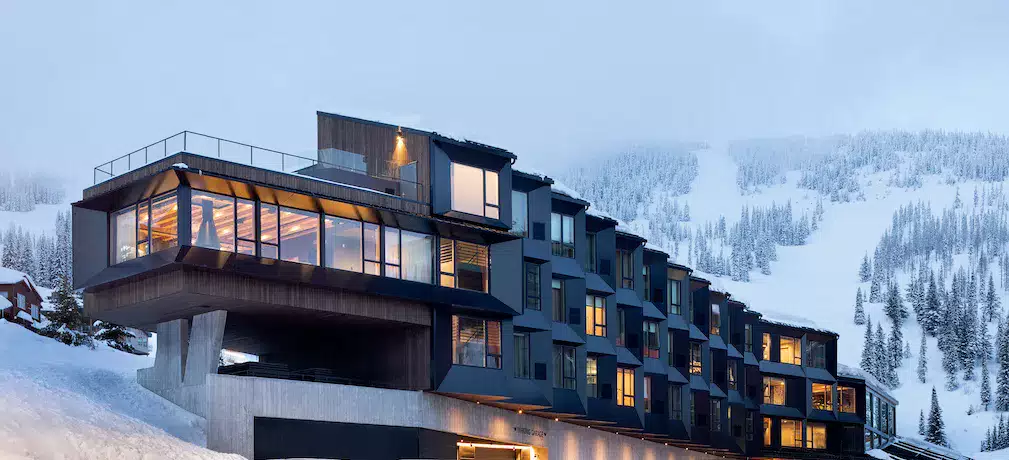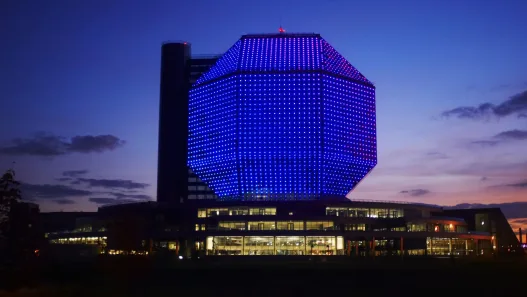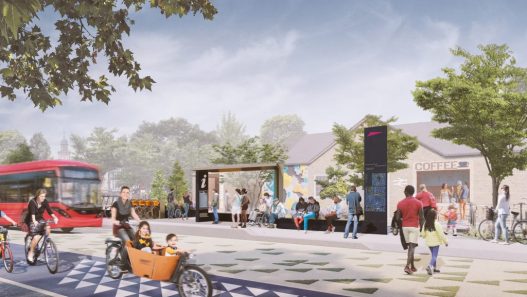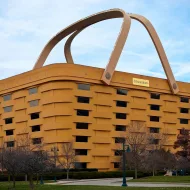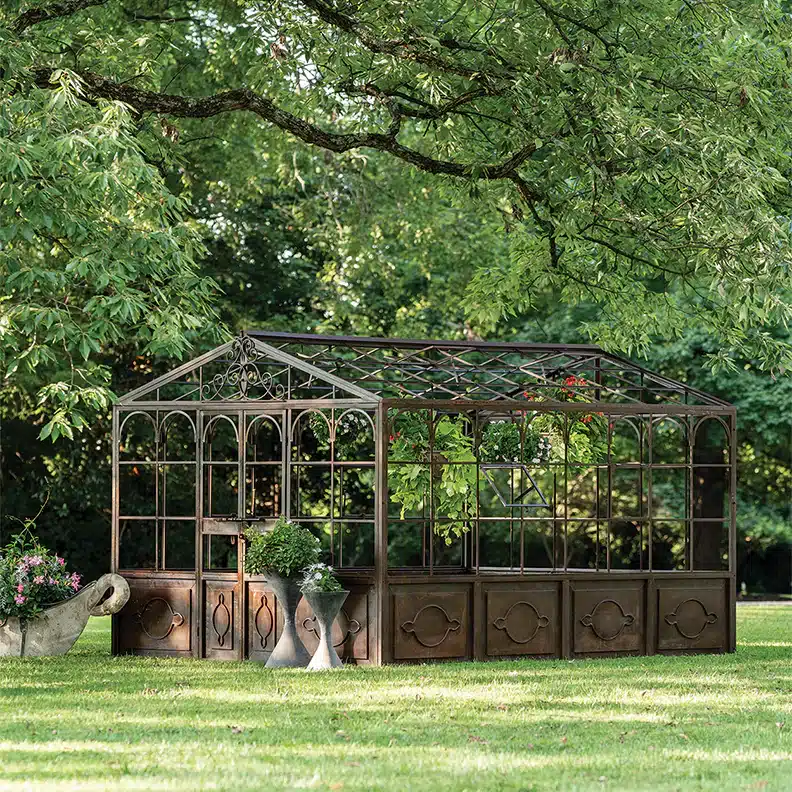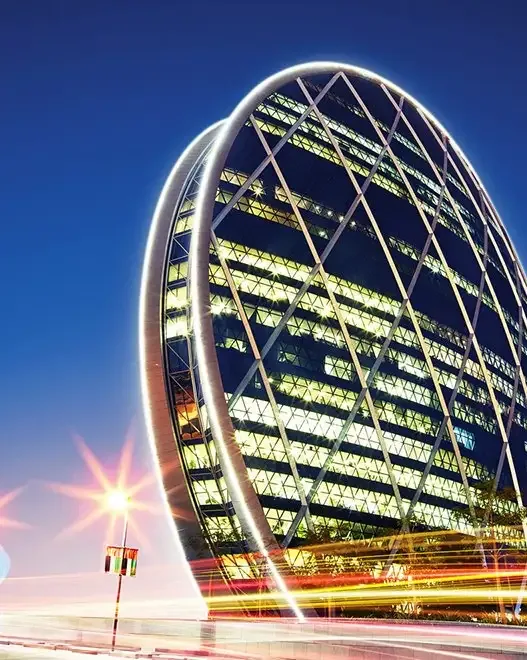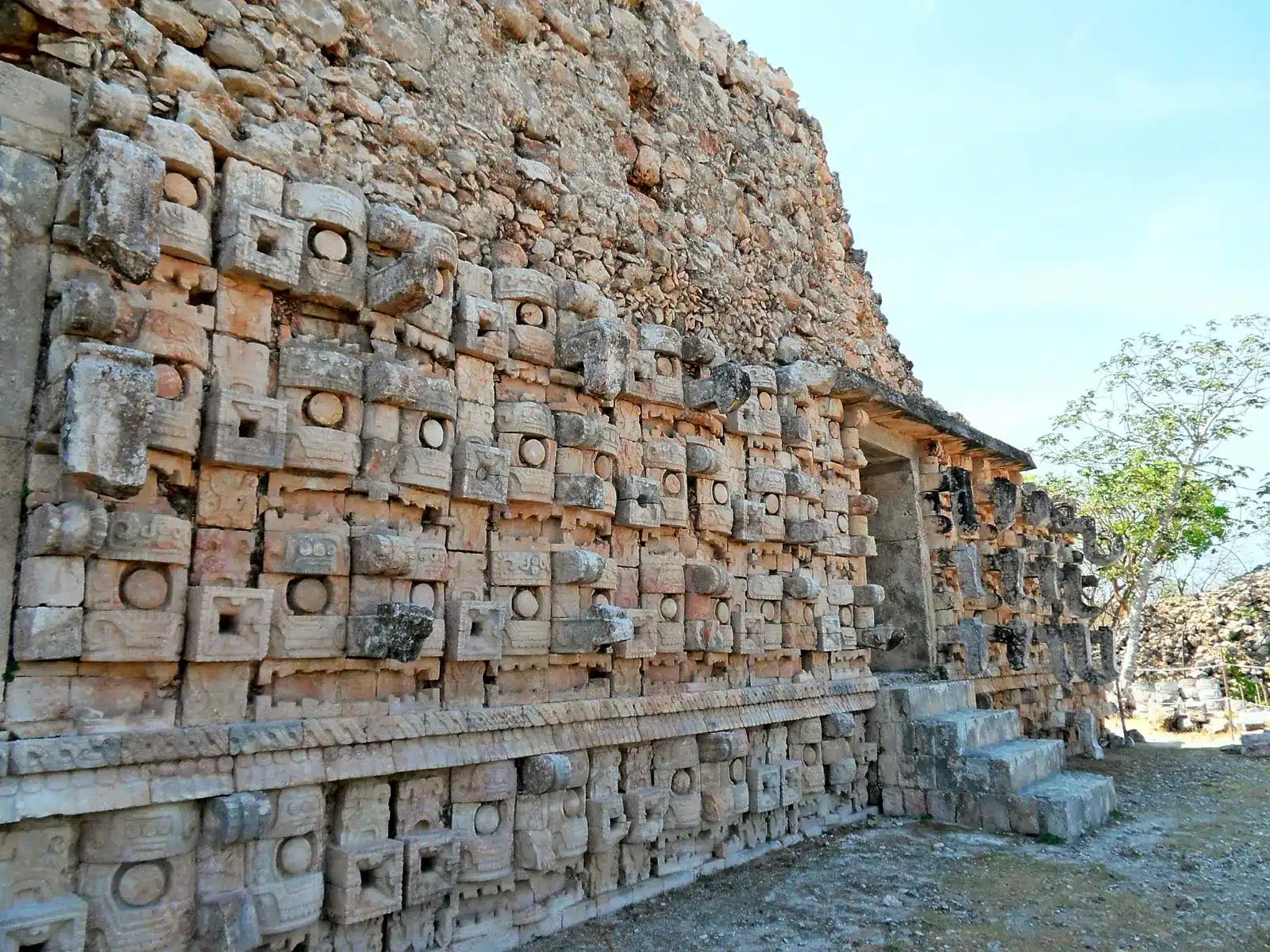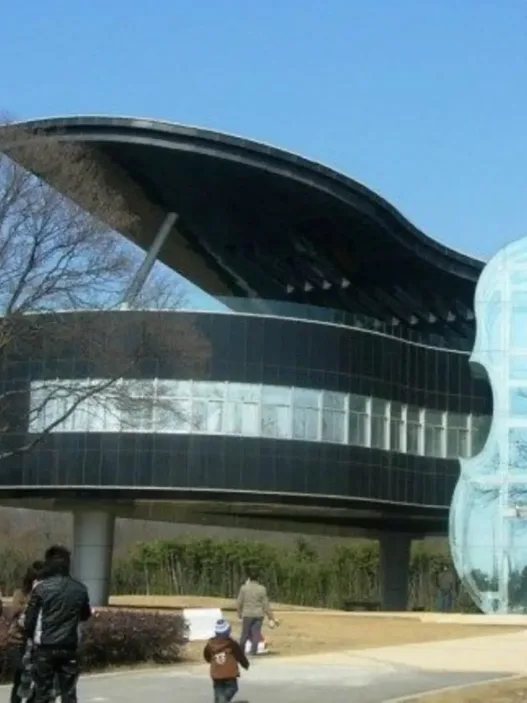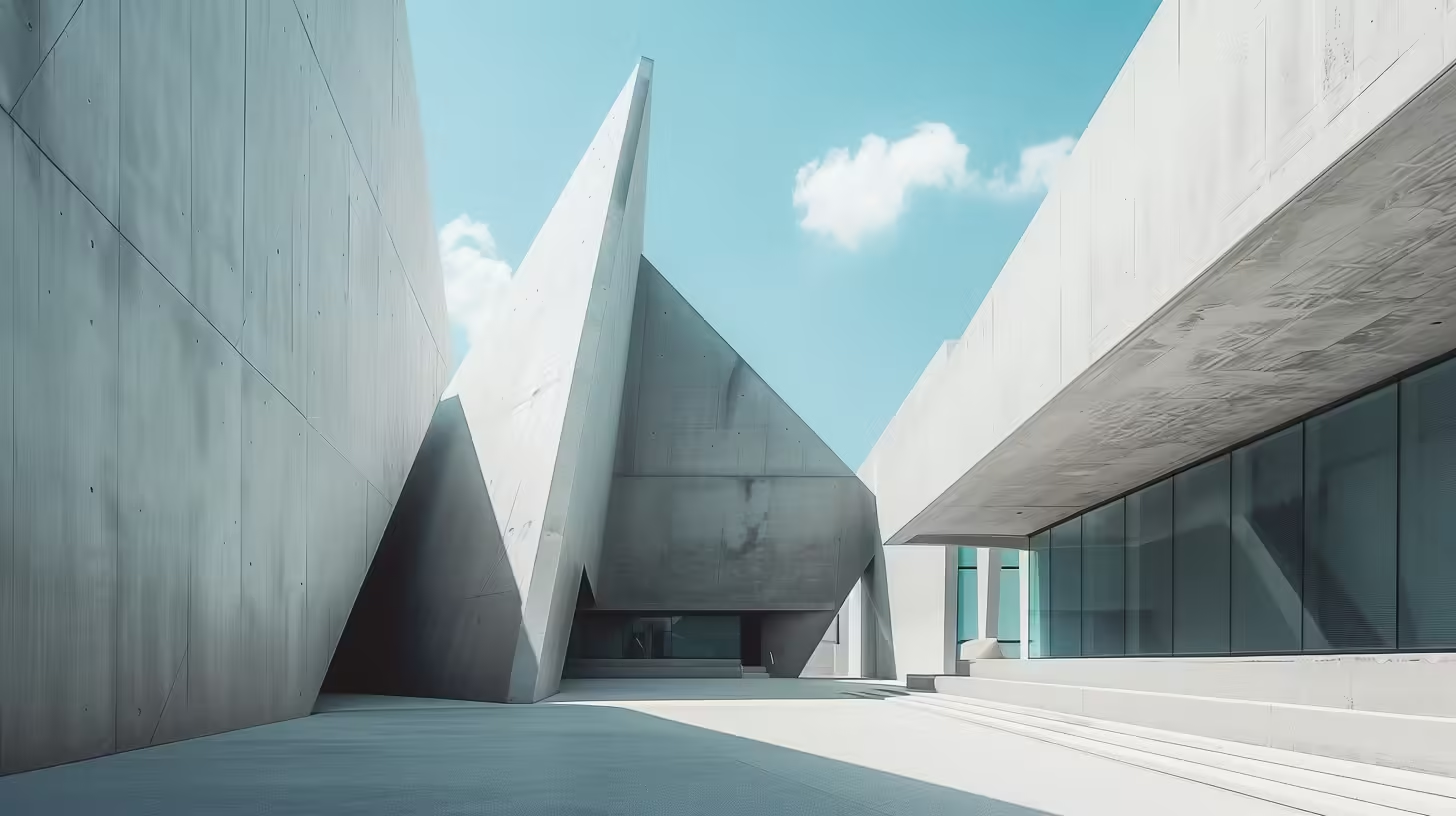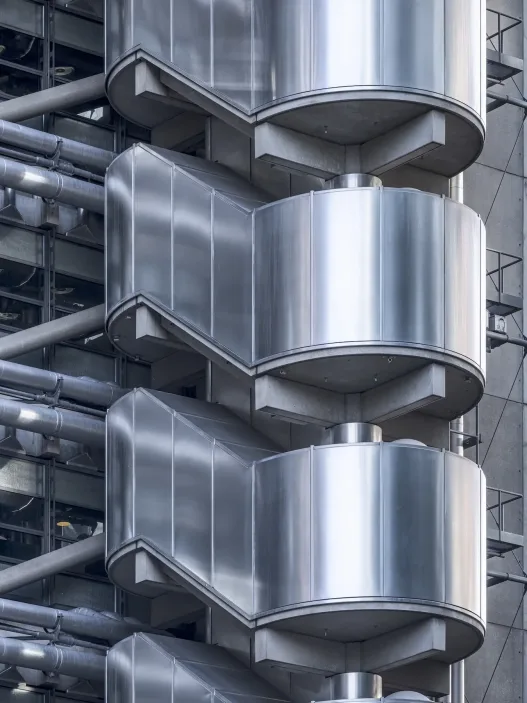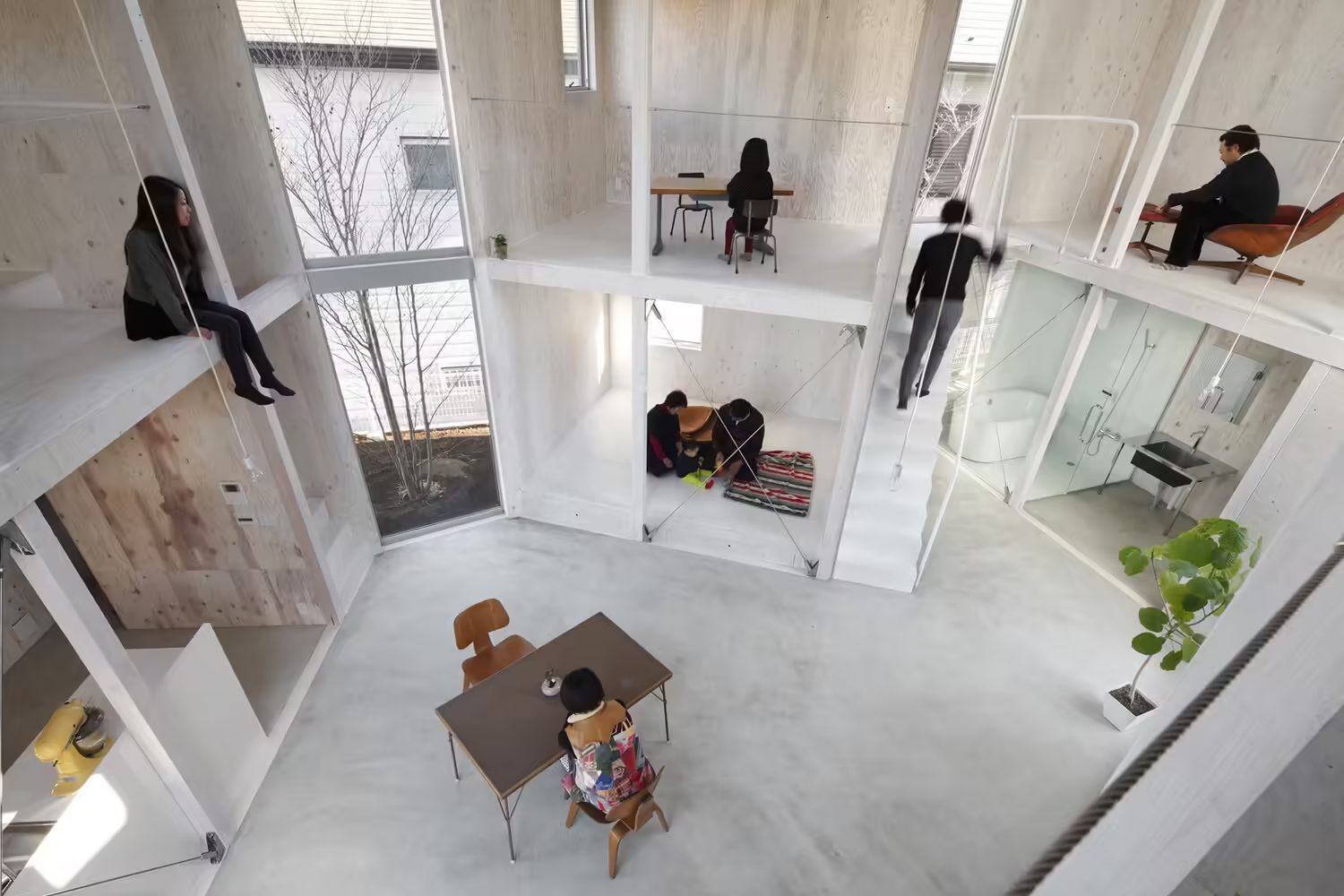The Kuwait Towers stand as a symbol of modern architecture and cultural heritage in the heart of Kuwait City. Completed in 1979, these iconic towers are a blend of traditional and contemporary design.
- Location: Kuwait Towers is located in Kuwait City, Kuwait, Kuwait.
- Year of Completion: The towers were completed in 1979.
- They were designed by the architectural firm S. A. E. Al-Nowais and consulting architect Pierre P. Jeanneret.
- Height: The tallest tower is 187 meters (613 feet) high.
- Design Inspiration: The towers are inspired by traditional Islamic architecture and symbolize the modernization and development of Kuwait.
- Functionality: The towers serve as water towers, storing water and also housing a restaurant and observation deck.
- Unique Features: Each tower has a spherical design and the largest sphere includes a restaurant and panoramic views of the city.
- Cultural Significance: The Kuwait Towers are recognized as a national symbol and architectural landmark of Kuwait.
- Tourist Attraction: It is a popular tourist destination offering visitors spectacular views of the Arabian Gulf and Kuwait City.
- Recognition: The towers have been recognized for their innovative design and have often featured in discussions about modern architecture in the Middle East.
Their unique structure and aesthetic appeal attract countless visitors and make them an important part of Kuwait’s identity. This chapter discusses the historical context, architectural significance, cultural impact, design inspiration and purpose of these extraordinary towers.

Historical Context
Construction of the Kuwait Towers began in the late 1970s, a period of rapid development and modernization in Kuwait. This period was characterized by oil wealth, which transformed the country into a vibrant commercial and cultural center. The towers were designed to symbolize this newfound prosperity and reflect the aspirations of the Kuwaiti people. Their construction was a response to the growing need for infrastructure that could support an expanding population and economy. The towers represent a significant investment in Kuwait’s future, aiming to create a modern urban landscape while honoring the country’s rich heritage.
Architectural Significance
The Kuwait Towers feature a unique architectural design that blends traditional Islamic motifs with modern engineering. Standing meters high, the tallest of the three towers has a distinctive bulbous shape, often interpreted as a representation of water and its importance in the desert region. The towers are constructed of reinforced concrete and decorated with blue and green mosaic tiles reflecting the colors of the sky and the sea. This design also ensures structural integrity against the region’s harsh weather conditions. The Kuwait Towers are often cited as a pioneering example of modern Islamic architecture, combining functionality with artistic expression, resonating with local culture and international sensibilities.
Cultural Impact
The Kuwait Towers are much more than a landmark; they play a vital role in the cultural life of Kuwait. A gathering place for locals and tourists alike, the towers serve as a backdrop for various events, celebrations and exhibitions. The towers also house a restaurant and observation deck offering panoramic views of the city and the Arabian Gulf, making it a popular destination for visitors. The towers, whose importance goes beyond tourism, represent the spirit of the Kuwaiti people, symbolizing resilience and unity, especially in the wake of the Gulf War. Over the years, they have become a source of national pride and cemented their status as a cultural icon through countless photographs, artworks and media coverage.
Design Inspiration
The inspiration behind Kuwait Towers is based on both local traditions and the natural environment. The designers have taken forms found in Islamic architecture and incorporated elements that reflect the heritage of the region. The curved shapes of the towers symbolize water towers, a very important resource in the desert environment. Furthermore, the colors and textures of the towers reflect the natural beauty of Kuwait’s coastline and desert landscapes. This harmonious mix of inspiration creates a meaningful building as it connects the modern city to its historical and environmental context.
Purpose and Functionality
The primary purpose of the Kuwait Towers goes beyond being merely an aesthetic marvel, serving as vital infrastructure for the city. The towers are equipped with water storage facilities, a particularly important function in a region where water scarcity is an urgent issue. The tallest tower serves as a revolving restaurant, offering visitors an unforgettable dining experience accompanied by breathtaking views. The observation deck allows guests to appreciate the city’s skyline and the beauty of the surrounding landscape. Therefore, while Kuwait Towers are known for their architectural splendor, they also play an important role in the daily life of the Kuwaiti people, blending functionality with art in a unique and effective way.
Architectural Design and Construction
Architectural design and construction form the backbone of how buildings function, look and interact with their surroundings. The field combines creativity with technical knowledge to create spaces that are both beautiful and practical. Understanding the various elements that contribute to architectural design helps us appreciate the complexities involved in the creation of our built environment.
Overview of Design Elements
At its core, architectural design is about the organization of space and form to fulfill specific purposes. Key elements include layout, scale, proportion and aesthetics. Layout is concerned with how spaces are organized and affects how people move through them. Scale and proportion deal with the relationship between the various components within a building, ensuring that everything feels harmonious. Aesthetics, on the other hand, encompass the visual appeal of a building and draw on cultural and historical contexts to create a sense of place.
Consider, for example, the Guggenheim Museum in New York, designed by Frank Lloyd Wright. Its spiral form and open interior challenge traditional museum layout expectations, encouraging visitors to experience art in a fluid and immersive way. This innovative approach emphasizes how design elements can not only define the functionality of a building, but also foster an emotional connection with the space.
Materials Used
The choice of materials in architecture significantly affects the durability, aesthetics and environmental impact of a building. Traditional materials such as wood, brick and stone have stood the test of time, often chosen for their availability and structural integrity. In modern architecture, however, materials such as steel, glass and concrete are often used, allowing for more ambitious designs and greater transparency in buildings.
For example, the use of glass in skyscrapers allows natural light to penetrate deeply into interiors, reducing the need for artificial lighting. The Burj Khalifa in Dubai is a notable example where the combination of reinforced concrete and glass façade maximizes energy efficiency while creating a striking skyline against the skyline.
Engineering Challenges
Architectural design is not without its challenges, especially when it comes to engineering. Structural engineers must ensure that buildings can withstand forces such as gravity, wind and seismic activity. This often requires innovative solutions, especially in regions prone to earthquakes or high winds.
The Leaning Tower of Pisa is a historical lesson in engineering challenges. Its undesirable tilt was caused by a poorly laid foundation on soft ground. Modern engineering practice now emphasizes extensive site analysis and advanced materials to avoid such problems. Today’s architects and engineers work together using computer simulations and advanced modeling techniques to predict how structures will behave over time, pushing the boundaries of design while ensuring safety and stability.
Iconic Features
Many buildings are defined by their iconic features, which can become symbols of a city or culture. These elements often reflect the historical context, technological advances and artistic trends of their time. Features such as domes, arches and towers also enhance structural integrity.
The Eiffel Tower is a prime example of an iconic feature that has become synonymous with Paris. Initially criticized, the tower is now famous for its intricate iron lattice design that showcases the possibilities of wrought iron as a building material. Such features often act as focal points in cities, attracting visitors and promoting a sense of identity.
Sustainability Considerations
As awareness of environmental issues increases, sustainability has become a critical consideration in architectural design. Sustainable architecture aims to minimize a building’s ecological footprint through thoughtful design, material selection and energy efficiency. This includes using renewable materials, maximizing natural light and incorporating green spaces.
Bosco Verticale in Milan is an inspiring example, consisting of two residential towers planted with thousands of trees and plants. This innovative design improves air quality and reduces urban heat. Sustainable practices in architecture go beyond individual buildings to encompass entire communities and encourage a more holistic approach to urban planning and development.
As a result, architectural design and construction encompass a rich tapestry of elements that work together to create functional, beautiful and sustainable spaces. By exploring design elements, material choices, engineering challenges, iconic features and sustainability considerations, we gain insight into the complex art and science behind our built environment.
3. Unique Features of the Towers
The design and structure of towers can often tell us more than their function. They stand as symbols of innovation and creativity, blending form and utility in extraordinary ways. Each feature of these tall structures contributes to their identity and purpose. In this article, we explore some of the unique features that make towers a vital part of the urban landscape.
Observation Decks
Observation decks act as a bridge between the ground and the sky, offering breathtaking views that stretch for kilometers. These platforms allow visitors to experience the city from a unique vantage point, connecting them to the environment in a way that ground level cannot. Imagine standing above the hustle and bustle of everyday life, looking out over a sprawling metropolis or a tranquil landscape.
In many iconic towers, observation decks are designed with glass walls to enhance the feeling of openness and immersion. The Burj Khalifa in Dubai, for example, has one of the highest observation decks in the world, attracting millions to take in the views from this height. These spaces also function as social meeting points where people share experiences, celebrate moments and create memories against the backdrop of a stunning landscape.
Water Reservoir Functionality
Towers often contain essential functions that go beyond aesthetic appeal. One of these features is water storage, which plays a critical role in urban infrastructure. These reservoirs are designed to store large quantities of water, ensuring that communities have access to this vital resource even in times of high demand or emergency.
Take the iconic water towers seen in many cities. Their elevated position allows gravity to facilitate the flow of water, providing practical engineering solutions. By integrating this functionality into the design, architects ensure that these buildings serve multiple purposes while maintaining their visual importance in the city.
Lighting and Aesthetic Elements
The way a tower is lit can change its appearance and influence the surrounding area. Lighting design in towers is an art form that enhances the character of the building and integrates it into the night landscape. Through careful lighting, towers can evoke emotions, highlight architectural features and even tell stories.
The Empire State Building in New York City creates a sense of community pride by using a dynamic lighting system that changes color to celebrate holidays and important events. Similarly, many modern skyscrapers utilize LED technology to create mesmerizing light shows that reflect the culture and identity of the area. This interplay of light and architecture elevates the tower experience, inviting both locals and tourists to interact with the tower in new ways.
Landscaping around the towers
The landscapes surrounding towers contribute significantly to their overall impact. Careful landscaping can create a seamless connection between the building and its surroundings, enhancing both functionality and aesthetics. Green spaces, pathways and water features serve not only as decoration but also as vital components of urban ecosystems.
The gardens surrounding the Petronas Towers in Kuala Lumpur offer a peaceful refuge in the midst of the bustling city. By providing a space for relaxation, rest and community gatherings, these landscaped areas foster a sense of belonging and enhance the quality of urban life. Towers can promote sustainability by integrating nature with architecture and create a vibrant urban atmosphere by encouraging people to spend time outdoors.
Cultural Symbolism
Towers often serve as powerful symbols within their communities. They can represent the aspirations and identity of a city and stand as monuments to achievement and progress. Architectural style, height and even the materials used can reflect cultural values and historical significance.
A prime example is the Tokyo Skytree, which symbolizes resilience and hope in a city that has faced countless challenges. Its design draws on traditional Japanese aesthetics while embracing modern engineering techniques to embody the spirit of innovation. Such towers become landmarks that people associate with their heritage, take pride in and connect with the place they call home.
As a result, the unique characteristics of towers extend far beyond their physical presence. They add functionality, beauty and meaning while enriching urban life. Whether it is viewing terraces offering stunning views, water reservoirs supporting communities, or landscaping that invites interaction, each element plays a vital role in the tower’s narrative, making it an integral part of the urban landscape.
4. Historical Significance and Milestones
The architectural landscape of any nation often tells a story of its cultural evolution, economic development and historical milestones. In Kuwait, this narrative is rich and varied and shows how the country’s buildings reflect its journey through time. Understanding the historical significance of Kuwait’s architecture, from ancient times to modern developments, reveals the social and economic transformations that have taken place.
Construction Timeline
The construction timeline of Kuwait’s architectural heritage is marked by different eras, reflecting the country’s growth. Initially, traditional buildings were constructed using local materials such as coral stones and palm fronds, creating a deep connection with the environment. As Kuwait began to prosper from trade and oil in the mid-20th century, there was a shift towards modern construction techniques. The 1970s marked an important turning point with the rise of iconic skyscrapers and public buildings that showcased innovative designs. Landmarks such as the Kuwait Towers, completed in 1979, symbolize the country’s modernization and ambition. This timeline also reflects Kuwait’s changing identity on the global stage.
Important Events in History
Several key events have shaped Kuwait’s architectural landscape. The discovery of oil in the 1930s transformed the economy and subsequently the urban environment. This boom led to the establishment of modern infrastructure, schools, hospitals and housing necessary for the growing population. However, the Gulf War in the early 1990s deeply affected many buildings and caused extensive damage. The reconstruction that followed provided an opportunity to incorporate modern architectural principles while respecting the traditional styles that represent Kuwait’s heritage. These events show how architecture is not just about buildings, but is deeply intertwined with the history and resilience of the nation.
Restoration Efforts
Restoration efforts in Kuwait demonstrate a commitment to preserving the past while embracing the future. Following the devastation of the Gulf War, many historic sites have been rehabilitated to restore them to their former glory. Projects such as the restoration of the Al-Kout Heritage Village have sought to preserve the essence of traditional Kuwaiti architecture while blending it with modern needs. These efforts often involve the use of traditional materials and techniques, enhancing structures for contemporary use while maintaining authenticity. Such restoration projects serve as a bridge connecting the past to future generations, fostering a sense of identity and pride among Kuwaitis.
Recognition and Awards
Kuwait’s architectural achievements have been recognized internationally, highlighting the country’s commitment to innovative design and sustainability. Several buildings have received prestigious awards for their architectural excellence, such as the Sheikh Jaber Al-Ahmad Cultural Center, which has been praised for its contemporary design in harmony with Kuwait’s cultural heritage. These awards position Kuwait as a major player in the global architectural community. This recognition helps inspire the next generation of architects and fosters a culture of creativity and innovation.
Role in Kuwait’s Development
The role of architecture in Kuwait’s development is undeniable. Buildings and urban planning are central to shaping social interactions and economic activity. The development of commercial centers, educational institutions and public spaces has facilitated vibrant community life and stimulated the economy. The construction of Kuwait International Airport, for example, has significantly increased connectivity, positioning Kuwait as a hub in the region. Architecture in Kuwait also anticipates future growth and embodies the aspirations of its people. As Kuwait continues to develop, its architectural landscape is likely to remain a testament to its history, resilience and vision of a prosperous future.
In summary, the historical significance and milestones of Kuwaiti architecture reveal a rich tapestry woven with cultural pride, innovative spirit and commitment to preservation. Through the timeline, key events, restoration efforts, recognition and its role in development, one can appreciate that architecture is a living narrative that reflects the heart of a nation.
5. Visit Kuwait Towers
Visiting Kuwait Towers is an experience that encompasses history, culture and breathtaking views. Standing majestically on Kuwait City’s coastline, these iconic structures offer a glimpse into the country’s modern identity, blending traditional elements with contemporary design. As you prepare for your visit, understanding accessibility, visitor experience and surrounding attractions will enhance your journey to this architectural wonder.
Accessibility and Location
Kuwait Towers are strategically located along the Arabian Gulf, making them easily accessible for locals and tourists alike. The towers are well connected by public transportation and bus services and taxis are readily available. For those driving, ample parking is available nearby, ensuring a hassle-free visit.
The location itself is picturesque, with towers overlooking the calm waters of the bay. Their unique design, consisting of three towers of different heights, is immediately recognizable on the skyline. Reaching meters high, the tallest tower houses a viewing platform that offers spectacular panoramic views of the city and beyond. As you approach, the towers’ shimmering blue and green tiles reflect the sun, creating a dazzling spectacle that captures the essence of Kuwait’s vibrant culture.
Visitor Experience
Stepping into Kuwait Towers is like entering a world of wonders. As soon as you enter, you are greeted by the impressive facade and the lush gardens surrounding the complex. The anticipation builds as you ascend to the main tower via a smooth, modern elevator. Meters high, the viewing platform offers a breathtaking perspective of Kuwait City, the coastline and the desert in the distance.
Inside the towers is a restaurant and café where visitors can enjoy traditional Kuwaiti food as well as international cuisine. Dining here is an experience in itself, as you savor delicious food while enjoying the spectacular view outside. The ambience is enhanced by the soft sounds of the waves and the laughter of other visitors, creating a warm and inviting atmosphere.
The towers also feature informative displays about their history and construction, allowing you to appreciate their engineering marvel. Interactive exhibits offer insights into Kuwait’s cultural heritage, making the visit both educational and enjoyable.
Nearby Attractions
The area surrounding Kuwait Towers is full of attractions that will further enrich your visit. Just a short walk away, you can explore the beautiful Al-Shaheed Park, a vast green space with museums, art installations and tranquil walkways. This park is an oasis of tranquility in the middle of the bustling city and is perfect for a leisurely stroll or picnic.
Also nearby is the Kuwait National Museum, which showcases the country’s history and cultural heritage through fascinating exhibits. Here you can learn about Kuwait’s past, from its early days as a trading center to its modern achievements. The museum’s proximity to the towers makes it an ideal addition to your itinerary.
For those interested in shopping, the nearby Souk Al-Mubarakiya offers a traditional market experience with everything from spices and textiles to handicrafts. This lively market is a feast for the senses, filled with the sounds of bargaining and the aromas of local cuisine.
Tips for Tourists
To get the most out of your visit to Kuwait Towers, it’s worth keeping a few tips in mind. Visiting in the late afternoon or early evening provides the best lighting for photos as the sunset casts a warm glow over the city. This is also the perfect time to enjoy a meal at the restaurant where you can watch the city transition into night.
Wear comfortable clothes, especially if you plan to explore the nearby attractions. It can get quite hot, so staying hydrated and wearing sunscreen is essential. Also, consider visiting on weekdays to avoid large crowds and have a more relaxed experience.
Finally, take advantage of the informative displays inside the towers. Engaging with the exhibitions will deepen your understanding of Kuwait’s culture and the significance of the towers and enrich your visit.
Events and Exhibitions
Kuwait Towers also serves as a cultural center, hosting various events and exhibitions throughout the year. From art exhibitions showcasing local talent to cultural festivals celebrating Kuwaiti traditions, there is often something happening in the towers. These events provide a unique opportunity to interact with the local community and experience Kuwait’s rich culture first-hand.
The Towers often collaborate with artists and cultural organizations to offer programs that are both entertaining and educational. Whether it is a photography exhibition that captures the essence of Kuwait or a music festival featuring local musicians, these events create a vibrant atmosphere that enhances the overall visitor experience.
For those interested in architecture and design, attending conferences or workshops held in the towers can be particularly inspiring. These gatherings often feature renowned architects and designers discussing their work and the influence of Kuwait’s architectural landscape on global design trends.
In summary, visiting Kuwait Towers offers a well-rounded experience that combines stunning views, rich cultural information and engaging community events. Whether you are a history buff, architecture enthusiast or just looking for a nice place to relax, Kuwait Towers and its surrounding attractions promise an unforgettable journey into the heart of Kuwait.
6. Conclusion and Future Perspectives
The Kuwait Towers are a remarkable testament to architectural innovation and cultural identity. As we explore their legacy, future plans and influence on contemporary architecture, we can appreciate their significance both as structures and as symbols of a nation’s aspirations. This chapter will explore these various aspects, providing a comprehensive overview of what the Kuwait Towers represent today and what they could become in the future.
The Legacy of Kuwait Towers
Completed in 1979, the Kuwait Towers have become iconic landmarks representing a nation. Characterized by three slender towers of different heights, their unique design combines modern aesthetics with traditional motifs. This mix symbolizes Kuwait’s journey towards modernization while honoring its cultural roots. The towers are a reminder of the country’s resilience, especially after the challenges faced during the Gulf War. They represent national pride and unity. As a landmark, Kuwait Towers attracts millions of tourists every year, further cementing its status as a symbol of Kuwaiti identity.
Future Renovations and Plans
Looking ahead, we see exciting prospects for Kuwait Towers. Renovation plans are underway to ensure the towers remain relevant and accessible for future generations. These updates aim to enhance visitor experiences while preserving the original architectural integrity. Integrating modern amenities, such as improved lighting and interactive exhibits on the history of the towers, can transform the site into a more engaging destination. Furthermore, sustainability is becoming an important element of urban planning, and efforts to incorporate environmentally friendly technologies into the maintenance of the towers could set a precedent for future architectural projects in the region.
Impact on Contemporary Architecture
The Kuwait Towers have significantly influenced contemporary architecture, particularly in the Gulf region. The towers’ unique silhouette and innovative design techniques have inspired a new wave of architects seeking to strike a balance between modernity and tradition. This influence goes beyond aesthetics, encouraging the inclusion of local culture and climate issues in new designs. The towers demonstrate how architecture can act as a bridge between the past and the future, encouraging architects to incorporate local narratives into their work while embracing global design trends. Kuwait Towers is an example of how thoughtful design can create structures that resonate with both local and international audiences.
Community Engagement
Community engagement is vital to the continued significance of the Kuwait Towers. Over the years, local initiatives have aimed to involve residents in the preservation and promotion of this landmark. Events, educational programs and cultural activities organized in the towers create a sense of ownership in the community. By encouraging public participation, the towers also serve as a center for civic pride and cultural exchange. This approach ensures that Kuwait Towers remains a living part of the community’s identity, reflecting both its history and its aspirations for the future.
FAQ
1. What are the Kuwait Towers?
Kuwait Towers is a set of three iconic towers located in Kuwait City, designed to serve as water towers and symbolize the modernization of Kuwait.
2. When were the Kuwait Towers completed?
The towers were completed in 1979.
3. Who designed the Kuwait Towers?
The towers were designed by the S. A. E. Al-Nowais architectural firm in collaboration with consultant architect Pierre P. Jeanneret.
4. How high is the tallest Kuwait Tower?
The tallest tower is 187 meters (613 feet) high.
5. What is the purpose of the Kuwait Towers?
The towers function primarily as water towers, providing water storage and also include a restaurant and observation deck.
6. What architectural style do the Kuwait Towers represent?
Inspired by traditional Islamic architecture, the towers reflect a mix of modernism and cultural heritage.
7. Can visitors access the observation deck?
Yes, visitors can access the observation deck for a panoramic view of Kuwait City and the Arabian Gulf.
8. Are Kuwait Towers a popular tourist destination?
Yes, Kuwait Towers is a major tourist attraction that attracts visitors with its unique designs and stunning views.
9. What makes Kuwait Towers culturally significant?
They are considered the national symbol of Kuwait and represent the country’s growth and architectural innovations.
10. Are the Kuwait Towers recognized in architectural debates?
Yes, because of their unique design and engineering, they often feature in discussions of modern architecture in the Middle East.
Reflections on the Kuwait Towers
A remarkable example of modern architecture, the Kuwait Towers embody both functionality and cultural significance. Completed in 1979, these iconic structures were designed to resemble water sculptures, reflecting Kuwait’s commitment to modernization while honoring its heritage. The towers’ unique spherical forms and elegant designs create a striking silhouette against the skyline of Kuwait City.
Every detail of Kuwait Towers showcases the architectural mastery of its designers, blending traditional Islamic motifs with contemporary style. The tallest tower, with its observation deck and restaurant, offers breathtaking views of the Arabian Gulf, making it a popular destination for locals and tourists alike. This dual functionality as a water reservoir and public space emphasizes the innovative spirit behind their design.
What are your thoughts on the Kuwait Towers? Do you believe that their design effectively represents Kuwait’s cultural identity? Is there a particular feature of the towers that fascinates you? We invite you to share your views. If you haven’t yet discovered our review of Burj Khalifa, click here to check it out.
Architect: S. A. E. Al-Nowais and Pierre P. Jeanneret
Architectural Style: Modern Islamic
Year: 1979
Location: Kuwait City, Kuwait


